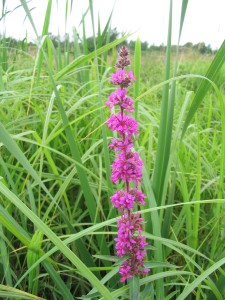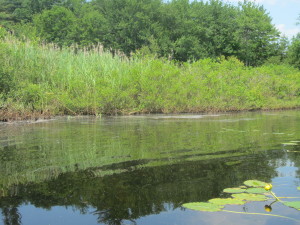By Dana Little, 6/21/2012
The earliest findings of plant use by people are flowers placed in a Neanderthal grave site found in Iraq dated 25,000 years ago. Crop agriculture in the Fertile Crescent area of the eastern Mediterranean dates back to 10,500 years ago. The Chinese cultivated rice 8,000 years ago along the Yangtze River. Early farmers in Mesoamerica, Andean South America and eastern North America all independently developed agriculture. Our backyard gardens today contain representatives from all over the world: potatoes from Peru, broccoli from the northern Mediterranean region, corn from Mesoamerica, beans of various types from Afghanistan, Egypt, Peru and North America and various kinds of squash from Mesoamerica.
When people find a plant that especially attracts them for its food or aesthetic value they transport it long distances. Where would we be without the spicy peppers that came from Mexico found in Szechuan cooking or the tomatoes that hail from Peru and characterize Italian cuisine? Our gardens would be impoverished without the roses first cultivated 5,000 years ago in China and poppies grown 4,500 years ago in Southern Europe and North Africa.
However, some plants can become a nightmare when transported to new locations. We call such plants invasive. Invasive plants may cause problems by crowding out a more desirable native species, shading slower growing plants or reproducing faster than native plants. The Japanese brought Kudzu, also called the “Mile-a-minute Vine”, to the bicentennial celebration in the US in 1876. In Japan they ate the starchy roots and livestock grazed on the green leaves. In the US, people loved the purple flowers and the shade provided by the rapidly growing vine. In the 1930s the government planted millions of seedlings in the South to control the erosion that tobacco and cotton farming created. Without natural predators, it grew up to 60 feet yearly, smothered native vegetation and climbed over anything in its way, including trees and homes. By the 1970’s the US declared Kudzu a weed and today economists calculate it costs the forestry industry 100 million dollars a year.
Beekeepers and plant lovers first transported another invasive plant, Purple Loosestrife, to the US in the 1800’s. The plant produces three million seeds every year which are rapidly carried by wind and water to settle in any moist soil. Now large tracts of wetland have few plants other than Purple. Scientists fortunately have discovered that the introduction of a number of insect pests can control it.
Purple Loosestrife
Another invasive, a species of grass, Phragmites australis, comes from Europe where grazing cattle kept it under control. In the US Phragmites grows anywhere from 6-18 feet tall and spreads at a rate of 30 feet per year, quickly shading out the native cattails and other wetland species. Bird and mammal diversity drops rapidly when this grass takes over. We see monoculture Phragmites swamps for many miles along 495 driving down to Boston. We have a small colony starting on the southwest cove near my home.
Phragmites on the east side of the pond intermixed with Button Bush and Cattails.
You can find lists of invasive plants at www.invasive.org or www.eddmaps.org . Plants commonly sold in nurseries are listed on these sites and include Barberry, Oriental Bittersweet, Norway Maple, Honeysuckle, Russian Olive, English Ivy and Winged Euonymus. There are nearly 1200 plants native to New England. Buying native plants ensures that you will not spread invasive plants. If you educate yourself before transplanting new plants you will keep our pond healthy.

